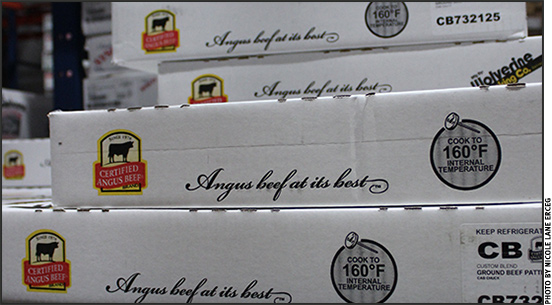MARKETING...

First-quarter Predictions
2018 beginning CAB cutout value: a three-year perspective.
January has kicked off with follow-through on late-December recovery of wholesale beef values. Spot market boxed-beef movement by the second week of the year lagged behind 2016, but sales for 22-day and longer delivery dates are respectably ahead of a year ago.
However, cutout prices are weakening into late January and the prior three years saw a noted decline through the middle of February. While fed-cattle numbers are slated to be a bit tighter near term, carcass weights are declining more slowly than typical from their early December highs. Read more.
In the Cattle Markets
End-of-year feed market information offered.
Jan. 12 saw the release of a plethora of USDA feed-related reports. Specifically relevant to cattle markets were the Crop Production 2017 Summary and the World Agricultural Supply and Demand Estimates (WASDE). The annual crop production summary releases detailed estimates of corn harvested acres and yields. These estimates are the result of extensive surveys of producers. The production estimates are incorporated in the WASDE grain balance sheets. Read more.
Quality Pays in 2017
2017 grid premiums & discounts show strong Choice, Prime prices.
As annual reviews are more enjoyable if the evaluation shows improvement, marketers of high-quality beef and cattle like to see a measurable margin for the extra effort. In 2017, packers were willing to pay steady to stronger grid prices for cattle hitting the quality and yield grade marks. On the quality side, the bellwether is the Choice-Select spread, averaging $11.82 per hundredweight (cwt.) for the year in the USDA weighted average, $1.11 per cwt. higher on the year.
The spike came in early June with a $27.07-per-cwt. advantage to Choice carcasses, $5 per cwt. higher than the 2016 high, with a seasonal low in September of $2.72 per cwt. Prime carcasses were paid on average a $15.94-per-cwt. premium over Choice in a narrow range spanning just $5.89 per cwt. from $13.71 per cwt. to $19.60 per cwt. Read more.
The Route to Higher Premiums
S.D. Angus producer shares journey to producing and marketing better cattle.
When Faulkton, S.D., cattleman Troy Hadrick and his two cousins took over management as the fifth generation on their family farming operation in 2012, the trio viewed it as an opportunity to revisit their goals and set new ones. Facing the combination of drought and corn costs at record highs that year, Hadrick shared that growing their commercial herd size to try to increase profits wasn’t a viable option.
“We decided to focus on making our cattle better to make them more valuable,” he said.
Hadrick detailed his genetic improvement journey with their commercial cow herd during the past five years at the 25th Range Beef Cow Symposium (RBCS) Nov. 28 in Cheyenne, Wyo. The RBCS is a biennial event cohosted by the University of Wyoming, Colorado State University, the University of Nebraska and South Dakota State University.
Read more.
Ginette Gottswiller
The Source
Don’t gamble on your bull purchases. Understand the numbers behind them.
“If you buy a bull with narrow shoulders and a small head, you won’t ever pull a calf,” was a comment I heard the other day at the local auction barn. The next comment was: “My calves looked as good as that other set of black calves, but mine only brought $1.41, and his sold for $1.64. There wasn’t any difference; they weighed about the same and looked just like mine.”
Buying bulls on their “good looks” isn’t much different than going to a Las Vegas casino. The upside is you don’t have to do any homework. Just pay the producer and load them up. It may be a little risky come calving time — and even riskier when you sell your calves.
Buying bulls using data and discriminating visual appraisal may take longer. It might remind you of studying for a high school history test, but that extra study time in selecting a bull to buy may reap a better price for your calves on sale day. Read more.
Angus Calendar
To view the Angus Calendar, a comprehensive list of Angus sales, click here.






